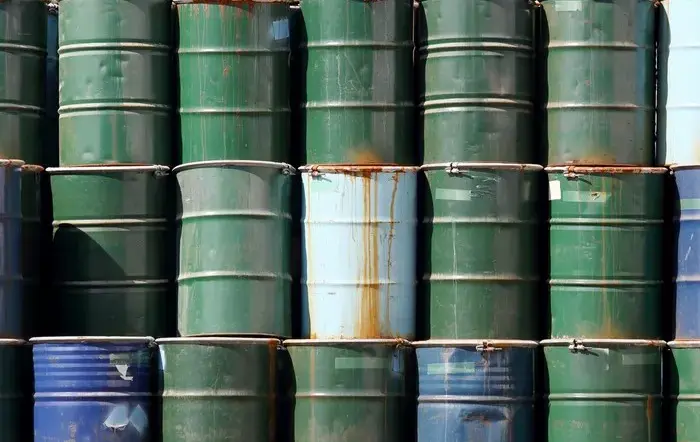Crude oil is one of the most important natural resources in the world. It is used in various industries, from transportation and energy production to manufacturing and chemical processing. Its color, however, can often be a subject of confusion for those unfamiliar with the substance. Many people wonder, “What is the color of crude oil?” The answer to this question is not straightforward, as crude oil can vary in color depending on its type, location, and processing.
In this article, we will explore the various factors that influence the color of crude oil, its classification based on color, and what it tells us about the oil’s composition. We will also look at how crude oil’s color affects its value, its uses, and its role in the global market.
What Is Crude Oil?
Before delving into the specifics of crude oil’s color, it’s important to understand what crude oil is. Crude oil, also known as petroleum, is a naturally occurring liquid found beneath the Earth’s surface. It is made up of a complex mixture of hydrocarbons, which are compounds containing hydrogen and carbon atoms. Crude oil also contains various impurities, such as sulfur, nitrogen, and metals.
The composition of crude oil can vary widely based on the geographical location where it is extracted, as well as the depth and method of extraction. As a result, crude oil can have different physical properties, including its color.
Crude oil is refined to produce fuels like gasoline, diesel, and jet fuel, as well as other products like plastics, chemicals, and lubricants. The color of crude oil can be an important factor in its processing and refining.
The Color of Crude Oil
Crude oil is not always the same color, and its appearance can range from light yellow or amber to dark brown or even black. In its raw form, crude oil can appear in a variety of shades depending on its chemical composition and the presence of impurities.
Factors That Affect the Color of Crude Oil
Several factors contribute to the color of crude oil. These include the oil’s composition, the types of hydrocarbons it contains, the level of sulfur, and the geographical origin of the oil.
1. Hydrocarbon Content
Crude oil is primarily composed of hydrocarbons, which are classified into alkanes (paraffins), cycloalkanes (naphthenes), and aromatic hydrocarbons. The type and proportion of these hydrocarbons play a significant role in the oil’s color.
Light Crude Oil: Light crude oil contains a higher proportion of lighter hydrocarbons like paraffins. These oils are usually lighter in color, often ranging from pale yellow to golden brown. Light crude oils tend to have higher quality, meaning they are easier to refine and generally produce higher yields of gasoline and diesel.
Heavy Crude Oil: Heavy crude oils contain more complex hydrocarbons, including heavier oils like asphaltines. These types of crude oil have a darker color, typically ranging from dark brown to black. Heavy crude oils are more difficult and costly to refine due to their higher viscosity and the presence of impurities.
2. Sulfur Content
Sulfur is another factor that affects the color of crude oil. Crude oils that contain higher levels of sulfur tend to be darker in color. Sulfur is often associated with the “sour” designation in crude oil classification, while low-sulfur crude is referred to as “sweet.” The higher sulfur content can cause crude oil to appear darker, and it also has an impact on the refining process.
Sweet Crude Oil: Sweet crude oil contains low levels of sulfur, usually less than 0.5%. It is typically lighter in color, ranging from pale yellow to golden brown. Sweet crude is preferred in refining because it produces higher-quality products with fewer sulfur-related pollutants.
Sour Crude Oil: Sour crude oil contains higher levels of sulfur, often greater than 1%. It is typically darker in color, ranging from dark brown to black. Sour crude is more challenging to refine due to the presence of sulfur, which requires additional processing to remove.
3. Geographical Origin
The geographical location where crude oil is extracted also plays a significant role in its color. Crude oil from different regions of the world can vary greatly in appearance due to the differences in geological formations and the types of hydrocarbons found in those areas.
Middle Eastern Crude Oil: Crude oil from the Middle East, such as that from Saudi Arabia, is typically light to medium in color, ranging from light brown to amber. These oils are often sweet, meaning they have lower sulfur content and are easier to refine.
Canadian Oil Sands: Crude oil from Canada’s oil sands, also known as bitumen, tends to be much darker due to its heavy hydrocarbon content and high sulfur levels. This type of oil is often referred to as “heavy” or “tar sands oil” and is much more difficult to refine.
U.S. Shale Oil: Shale oil, such as that extracted from the Bakken or Permian Basin in the United States, can vary in color depending on the specific formation, but it generally falls within the medium to dark range. This oil may be sweet or sour, depending on the region.
4. Oil Type (Light, Medium, Heavy)
Crude oil is often classified based on its density and viscosity. These classifications, in turn, are related to its color.
Light Crude Oil: Light crude oil has a low viscosity and is typically lighter in color. It is more fluid and can be refined more easily, producing higher-quality refined products.
Medium Crude Oil: Medium crude oil is denser than light crude but less viscous than heavy crude. Its color can range from yellow to brown, depending on the specific composition.
Heavy Crude Oil: Heavy crude oil has a higher viscosity, making it thicker and more difficult to pump and refine. It tends to be darker in color, ranging from brown to black.
Crude Oil and Market Pricing
The color of crude oil, while important in understanding its composition, is not the primary factor in determining its price. The price of crude oil is influenced by a variety of market forces, including supply and demand, geopolitical events, and global economic conditions. However, the quality of crude oil, which is often indicated by its color, can have an impact on its price.
Light Crude vs. Heavy Crude: Light crude oils tend to be more valuable because they are easier and less expensive to refine into high-demand products like gasoline and diesel. As a result, light crude oils often fetch higher prices in the market compared to heavier crudes.
Sweet Crude vs. Sour Crude: Sweet crude oils are generally more desirable because they contain less sulfur, making them less expensive to refine. Sour crude oils, on the other hand, require more expensive refining processes to remove the sulfur, which can lead to lower prices.
The Role of Color in Crude Oil Refining
The color of crude oil can provide some clues about its composition, which is important for refineries. The refining process aims to separate crude oil into its various components, such as gasoline, diesel, and jet fuel, using methods like distillation and cracking.
Light Crude Refining: Light crude oils, which are less dense and less viscous, are easier to refine. They produce higher yields of valuable products like gasoline and diesel. These oils are generally more cost-effective to refine, making them more attractive to refineries.
Heavy Crude Refining: Heavy crude oils require more complex and costly refining processes to break down their thicker, more viscous components. Refineries must use additional technologies, such as thermal cracking or hydrocracking, to process heavy crude oils. The refining of heavy crude can produce valuable products, but it comes at a higher cost.
Conclusion
Crude oil is a complex and versatile resource that can vary in color depending on its composition, sulfur content, geographical origin, and type. While crude oil’s color may seem like a minor detail, it can offer valuable insights into its chemical makeup and refining requirements. Lighter crudes are generally easier and less expensive to refine, while heavier, sourer oils require more costly processing.
The color of crude oil is just one factor in the broader world of oil trading, refining, and consumption. While it is an important consideration for refineries and traders, the price and value of crude oil are ultimately determined by market dynamics such as supply, demand, and geopolitical events. Whether light or dark, crude oil remains a critical component of the global energy landscape and economy.
Related topics:
- What Year Was Crude Oil Discovered?
- When Was Crude Oil First Refined?
- How Much Is Crude Oil Selling For?


































